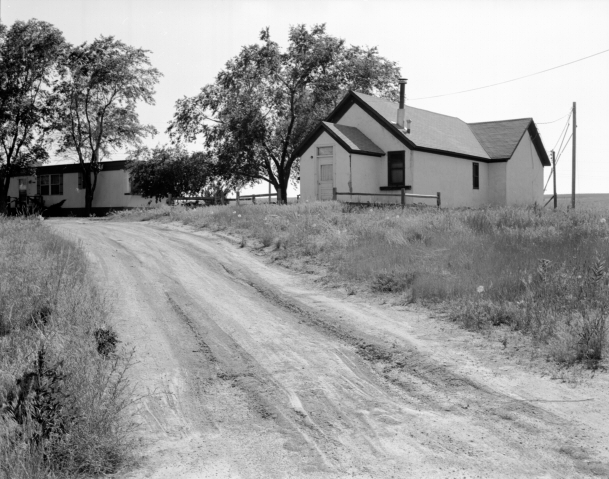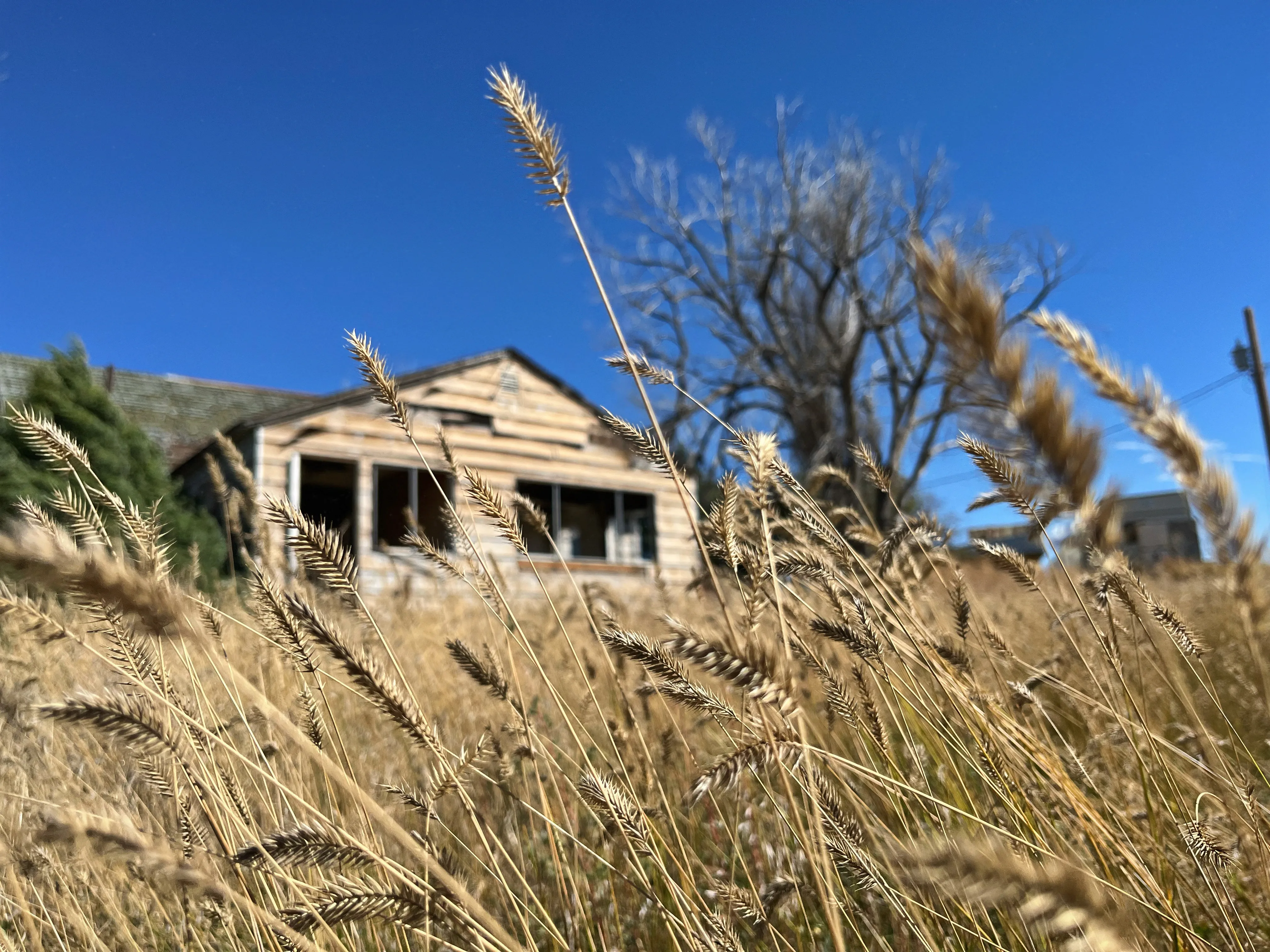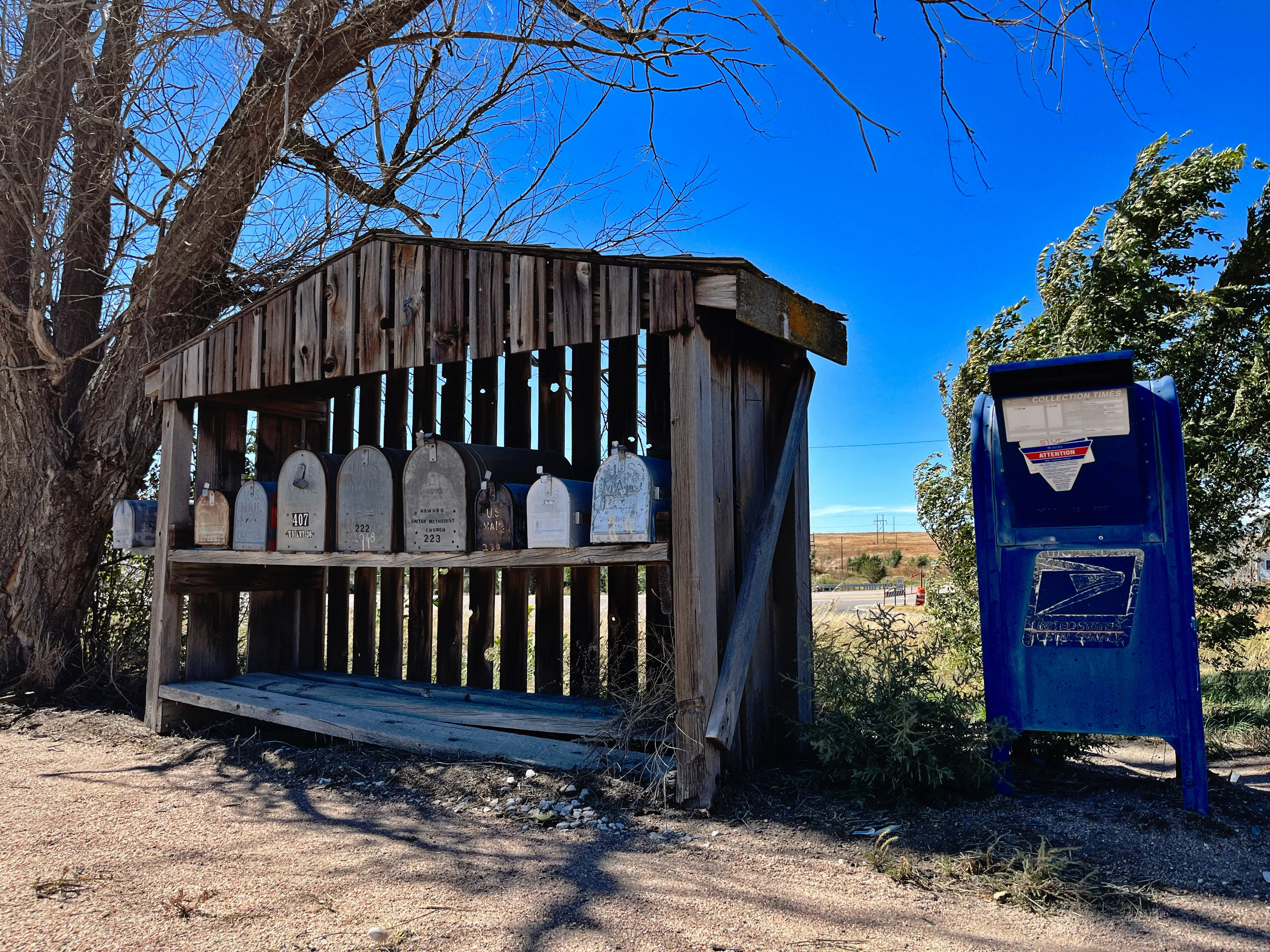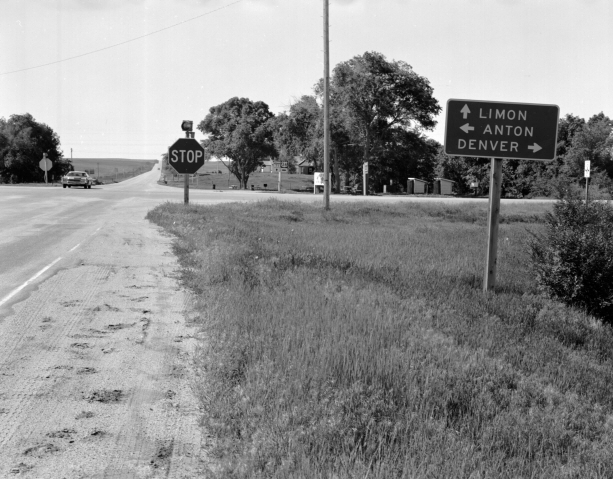
Story
Last Rites of Last Chance
Time traveling through an abandoned ghost town on Colorado's Eastern Plains.
Editor’s note: This article was adapted from an episode of abandoned: The All-American Ruins Podcast about Blake Pfeil’s visit to Last Chance. Listen below (or wherever you get your podcasts).
When I hear the words “ghost town,” I think of a manicured kind of roadside attraction, with a manufactured boardwalk and a gift shop. Or maybe it's more of a legally preserved space, boasting protective fences and information placards providing a little bit of information on the town history, sponsored by the local or county or state history organization. That’s what I assumed I was going to get with Last Chance. I was wrong.
I first learned about Last Chance, Colorado on Reddit. I’d scrolled past brief mentions about the abandoned ghost town before, but this was the first time the idea of it got my attention. “Oh, right.” I thought. “I remember this place.” I popped onto Google Maps, zoomed in on a site about an hour east of Denver, landed on a Street View of the unincorporated ruin, and knew, instantly, that my next adventure would be in Last Chance.
As the producer of the award-winning abandoned: The All-American Ruins Podcast—an immersive audio series where I fantastically recreate my experiences exploring abandoned places through sonic storytelling—it’s my job to seek out places like Last Chance that look like they’ve been raptured or sound like they have a story to tell. With every visit to an abandoned place, there's always that degree of uncertainty, those questions gnawing at the back of your mind: Will it still be there when I arrive? Will it still be intact? Still standing? Still look the way that I’ve dreamt it looks in real life, based on the hours and hours that I’ve spent perusing it on the web?
Or will it be totally destroyed, either by nature or by wrecking ball?
With Last Chance, though, I was a bit more hopeful that I’d be able to explore — something. Anything. I initially missed my exit off I-70, which led me to explore a completely different abandoned space (and a story for another time), but when I finally got a mile outside of Last Chance, my anxiety mounted. Questions raced through my mind: Did I just drive an hour and change outside of Denver for nothing? Will I get in trouble for being here? Is there anything left?
The last one was immediately answered when I crested the final hill into the town.
Back Then
The US Board on Geographic Names cites Last Chance, Colorado as one of six towns across the country bearing that name. Last Chance also makes appearances on maps in Idaho, North Carolina, Oklahoma, Iowa, and California. As the name suggests, the Colorado version was just that: leaving Denver, it was the last chance motorists had to get gas, food, or a bed before hitting the empty plains for miles and miles and miles. Officially established in 1925, the marketing efforts behind the town of Last Chance stoked the coals of its popularity through the mid-1960s when the first portions of I-70 opened to the public. Unfortunately, the interstate bypassed the town by almost forty miles to the south, and by the late 1970s, it was almost completely forgotten.
The last US Census to capture Last Chance’s population data was in 2000, at a whopping twenty-three people. Today, the town of Woodrow, fifteen minutes to the north of the ghost town, carries the mail for Last Chance, which sits on the corner of US Highway 36 and CO State Highway 71. In fact, the town begins with a gaggle of bygone mailboxes scrunched together, neighbored by an official US post office box that appears to still be active. The day I visited the site, the wind hollered across the plains, and it drew me back into my childhood, in the Colorado foothills, sleepless nights saturated with endless gusts and gales blasting through the Continental Divide, up and over the Rocky Mountains where I grew up. I looked around for any “No Trespassing” signs, but seeing none, I proceeded, with caution.
What’s left of the town is difficult to quantify, but essentially, there are three remaining structures that are fully intact. In their various forms, they resemble houses, but at one point, they were a house, a motel, and the motel office. There was also a gas station (whose foundation is now overgrown and hard to see) and a diner (Dairy King, not Dairy Queen) that is now just a bunch of empty trailers. As I walked up the slight hill towards the first building, I thought, “How did the owners of this motel cope with the loss of business? What happened to them? Where are they now?”
It’s the kind of question I ask myself a lot when roaming the ruins of America. The untold stories behind these forgotten landmarks remain tiny thorns in my side, a large part of why I let my imagination run amuck when I’m exploring. I am naturally curious. I poked my head into the former office and learned that not much is left besides a chair or two. Each building is like that. The third one had furniture in it. I found myself staring at the few remaining pieces, chairs mostly, and noticed a mattress that had clearly been slept on, recently, a not-so-uncommon occurrence in these spaces. I could hear the sound of the moaning plains outside, the crickets, the cicadas. I thought about the boom-and-bust nature of the American economy and wondered about how the birth of the interstate highway system decimated towns all over the state, just like this one.
The Federal-Aid Highway Act of 1944
When I learned about The Federal-Aid Highway Act of 1944, the bill that funded the birth of I-70 (which was, incidentally, the first interstate highway to begin construction under that legislation), I never learned about the aftermath its introduction left behind for small communities just like Last Chance. In that light, the ghost town serves as more than an unusual travel destination; it also exists as a symbol of the mercurial American culture and society, a monument to the forceful churns of capitalism, and a stamp on a timeline of Colorado history that foreshadowed the state’s extensive, more recent population growth.
When I hopped into my rental truck, I noticed a “For Sale” sign staked firmly in the ground on the corner of the town lot. I looked it up and learned that the entire plot of land was for sale. $15,000. That’s it. The listing read: “Take a look at this quaint piece of land located by the busy intersection of Hwy 36 and Hwy 71. This could be a lucrative location for a gas station, convenience store, or other small business, as there is nothing for several miles in all directions. There used to be a house, a bustling motel, and a restaurant on this lot, many years ago. The structures still stand but are not able to be salvaged.”
For weeks after my visit to Last Chance, I couldn’t stop thinking about that $15,000 price tag. How can one possibly calculate the worth of a plot of land that, at one point, saw so much human activity, became a part of so many people’s story? I also couldn’t shake the last line of that sale listing from the Colorado Land Company out of my head, “The structures still stand but are not able to be salvaged.”
Somehow, hearing that sentence echo in my head over and over again made me feel very sad.




